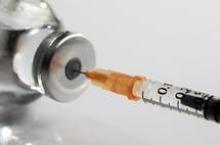Vaccination coverage for young children increased for some vaccines, but remained generally stable in 2013 relative to 2012, with less than 1% of children receiving no vaccinations, according to the 2013 National Immunization Survey.
However, coverage varied widely across geographic regions and by race and socioeconomic status. For example, children living below the poverty level had lower vaccination coverage than those living at or above the poverty level for many vaccines, and black children had lower coverage than white children for several vaccines, Laurie D. Elam-Evans, Ph.D., of the Centers for Disease Control and Prevention in Atlanta and her colleagues reported in the Aug. 29 issue of Morbidity and Mortality Weekly Report (MMWR Aug.29, 2014;63:741-8).
Coverage achieved the 90% national Healthy People 2020 target for one or more doses of measles-mumps-rubella, three or more doses of hepatitis B vaccine (HepB), three or more doses of poliovirus vaccine, and one or more doses of varicella vaccine, but was below targets for four or more doses of diphtheria, tetanus, and pertussis vaccine; four or more doses of pneumococcal conjugate vaccine; the full series of Haemophilus influenza type b vaccine; two or more doses of hepatitis A vaccine; rotavirus vaccine; and the HepB birth dose. Coverage increased for HepB birth dose and rotavirus vaccination, according to the random-digit dialed telephone survey of households with children aged 19-35 months (MMWR. 2014;63[34]:741-8).
"To sustain high coverage and improve coverage for more recently recommended vaccines and those that require booster doses after age 12 months, efforts are needed by parents, clinicians, health systems, and local and state health departments to implement the interventions recommended by the Guide to Community Preventive Services," the investigators said.
Doctors and nurses coping with the challenges they face in the course of clinical work, and parents who continue to prioritize immunization to keep their children healthy and safe are to be commended for the high immunization rates in the U.S. in 2013, according to Dr. Anne Schuchat, director of the National Center for Immunization and Respiratory Diseases.
"These people are central in keeping young children healthy by ensuring they receive the recommended vaccines on schedule," she said in a press statement regarding the report.
The investigators had no disclosures to report.


